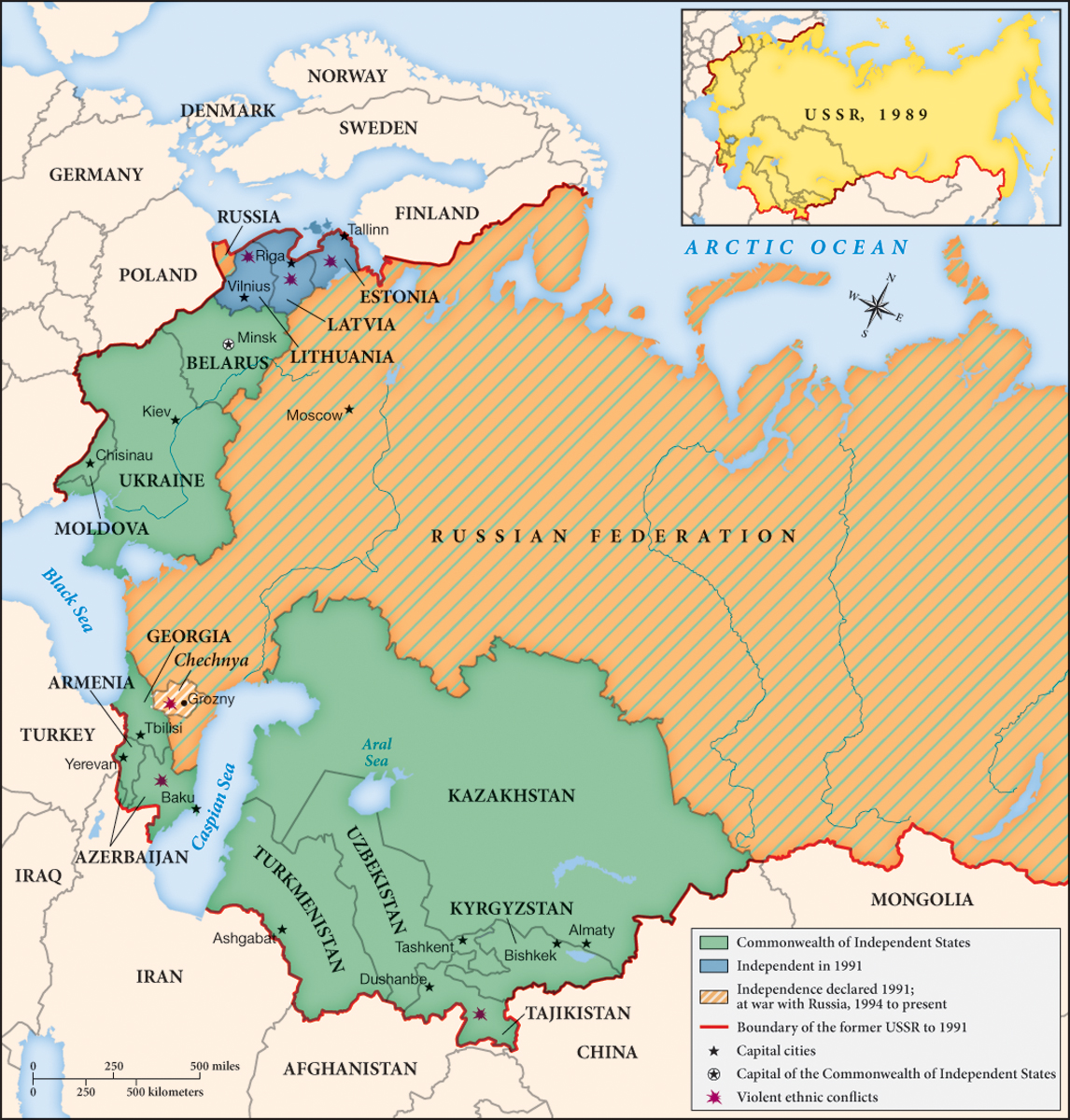The Soviet Union Comes Apart
The Soviet Union Comes Apart
Less than three years after the overthrow of communism in its eastern European satellites, the once powerful Soviet Union itself fell apart. Perestroika had failed to revitalize the Soviet economy; people confronted corruption and soaring prices, and Mikhail Gorbachev’s planned “transition to the market [economy]” satisfied no one. In 1991, the Russian parliament elected Boris Yeltsin over a Communist candidate as president of the Russian Republic—the last straw for a group of eight antireform hard-liners, including the powerful head of the Soviet secret police, or KGB, who attempted a coup. As coup leaders held Gorbachev under house arrest, Yeltsin defiantly stood atop a tank outside the Russian parliament building and called for mass resistance. Residents of Moscow and Leningrad filled the streets, and units of the army defected. People used fax machines and computers to coordinate internal resistance and alert the world. Citizen action defeated the coup and prevented a return to the Communist past.
After the failed coup, the Soviet Union disintegrated. People tore down statues of Soviet heroes; Yeltsin outlawed the Communist Party newspaper, Pravda, and sealed the KGB’s files. At the end of August 1991, the Soviet parliament suspended operations of the Communist Party itself. The Baltic states of Estonia, Latvia, and Lithuania declared their independence in September; other republics within the USSR followed their lead. Bloody ethnic conflicts and anti-Semitism revived as political tools. On December 31, 1991, the final agreements dissolved the USSR, and twelve of the fifteen former Soviet republics banded together to form the Commonwealth of Independent States (CIS) (Map 29.2).

Weakened by the coup attempt, Gorbachev abandoned politics. Yeltsin stepped in and accelerated the change to a market economy, bringing on an ever-deepening crisis. Yeltsin’s political allies, the military, and bureaucrats bought up or simply confiscated national resources. A new class of superwealthy Russians (including Yeltsin’s own family) called oligarchs arose by stealing the wealth in natural resources and factories once seen as belonging to all the people. Meanwhile social disorder prevailed as organized criminals interfered in the distribution of goods and services and assassinated legitimate entrepreneurs, legislators, and anyone who criticized them. Amid these scandals, Yeltsin resigned on December 31, 1999. He appointed a new protégé, Vladimir Putin, as interim president.
Putin was a little-known functionary in Russia’s new security apparatus, which had evolved from the old KGB. In the presidential elections of spring 2000, Putin surprised everyone when the electorate voted him in. Though associated with the Yeltsin family corruption, he declared himself committed to legality. “Democracy,” he announced, “is the dictatorship of law.” With a solid mandate, Putin proceeded to drive from power the biggest figures in regional and central government, usually the henchmen of the oligarchs. Putin’s popularity rose even higher when the government arrested the billionaire head of the Yukos Oil Company in 2003. The pillaging of the country—the source of ordinary citizens’ recent suffering—was finally being punished. According to critics, however, Putin was merely transferring Russia’s natural resources and other assets to himself and his own cronies.